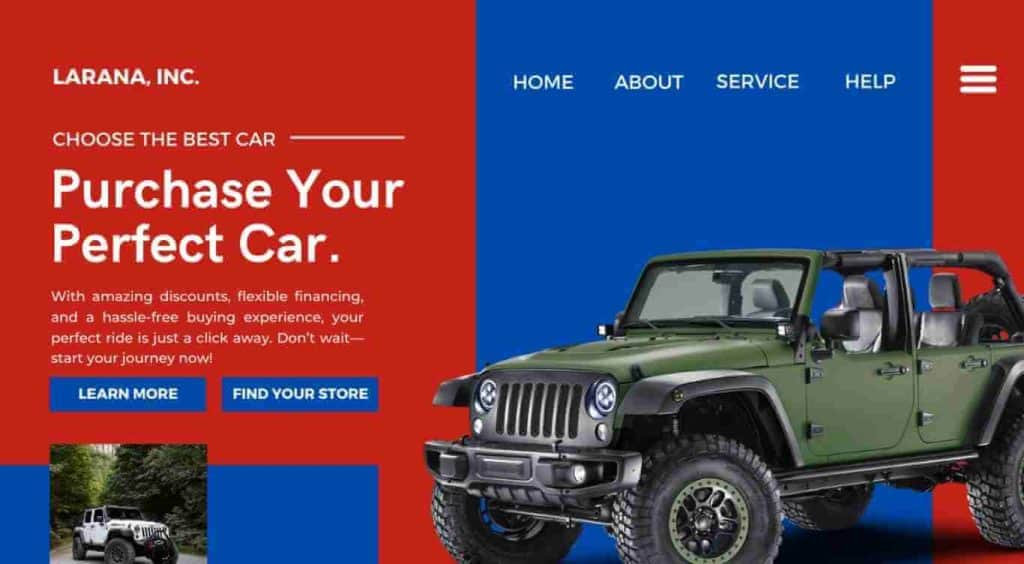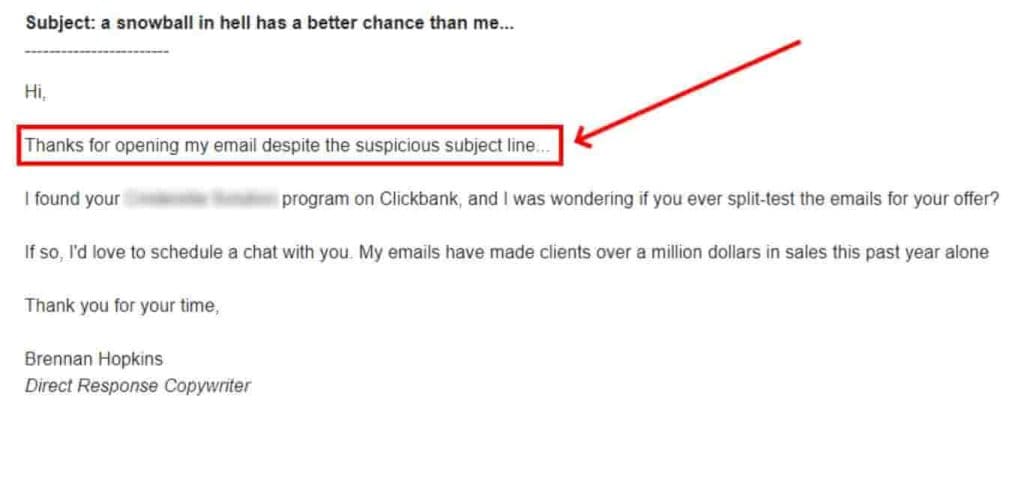This post may contain affiliate links. If you use these links to buy something we may earn a commission at no extra cost to you. Thank you for your support!
Have you ever thought about why some words make you want to click “Buy Now” and others make you want to scroll away like your life depends on it? Copywriting is all about using words to get people to do something.
It’s behind every outstanding sales page, ad, or YouTube channel description. It is the difference between having visitors and getting them to come back again and again. Sounds pretty strong, does it not?

If you’re looking to improve your writing or explore a career in this field, understanding what copywriting is—and how it works—is your first step to success.
In this blog, I’ll walk you through everything you need to know about copywriting and why it’s a skill worth mastering.
What is Copywriting?
Copywriting is using words to get people to take action. Get someone to do something, like click on a link, give your email address, or buy a new lawn mower. At its core, copywriting is all about connecting with an audience—making them laugh, think, or say, “Yes, this is exactly what I need!”
Think of it as storytelling with purpose. While novels entertain and essays inform, copywriting sells—new products, ideas, services—you name it. From small businesses to large enterprises, from mom-and-pop shops to digital marketing wizards, everyone needs a great copywriter.
A great example? You’re reading this. And it’s working.
The goal of copywriters is simple but powerful: to get results from the words they use, no matter if they are writing titles for blogs, YouTube channels, or starting new advertising campaigns. Copywriting helps businesses connect with their customers in many ways, such as through sales pages and letters. It is what holds everything together, from great ideas to online ads.
So, stick around, because learning about copywriting is a good idea. Who knows? It might just inspire your next sale.
10 Examples of Copywriting
Copywriting is everywhere, and chances are you’ve seen it (or fallen for it!) more times than you can count. Here are some great examples of where copywriting shows up in the real world:
1. Web Pages and Blogs
Every web page you visit, the “About Us” section or a blog article, is well-written to inform, engage, and attract target audiences.

2. Landing Pages
Landing pages are created to turn viewers into leads. Usually, they have catchy titles, strong headlines, and clear calls to action.

3. Sales Pages
Do you know those pages that convince you to buy a product or service? Whether it’s for new products like the latest gadgets or a course to start your own copywriting business, that’s copywriting in action.

4. Email Copy
Newsletters and sales emails keep people interested. Copywriting gets you to open, read, and take action—like clicking on a link or signing up with your email address. You will get more responses if you add personal touches.

5. Social Media Posts
A successful copywriter knows how to craft social media content with captions that get likes, shares, and comments.

6. Product Descriptions
Do you know those descriptions that make you feel like you need the item? That’s copywriting doing its thing.

7. Press Releases
A great press release gets picked up by media outlets and puts a business in the spotlight.

8. Direct Mail
Remember those postcards, flyers, or letters that show up in your mailbox? That’s direct mail in action! It’s an old-school but still powerful form of copywriting designed to deliver a specific action, like calling a number, visiting a web page, or even stopping by a local store.

9. Advertising Materials
From catchy TV commercials to scroll-stopping Instagram ads, copywriting powers advertising campaigns for small businesses, large enterprises, and everything in between. They grab attention and encourage consumer interest.

10. Headlines and Slogans
“Just Do It.” “I’m Lovin’ It.” These short but powerful lines stick in your head and connect you to a brand. That’s effective copywriting!

Copywriting can be in many different formats and styles. Knowing these can help you pick the best one for your needs. Don’t forget that effective marketing speaks directly to the people you want to reach.
What Are the Different Types of Copywriting?
Copywriting comes in all shapes and sizes, just like marketing campaigns, lawn mowers, or YouTube videos (seriously, it’s that versatile). Let’s break down the most common types so you can find the right place to start mastering the art of the written word!
1. Direct Response Copywriting
This is the “act now! ” type of copywriting that thrives on getting instant results. Whether it’s a sales page, email, or print ad, the goal is to get your audience to take a form of action—like buying, signing up, or clicking through. It’s the bread and butter of advertising agencies and marketing campaigns.
2. SEO Copywriting
Ever wondered how some web pages show up at the top of the search results? That’s SEO copywriting in action. It’s about blending keywords seamlessly into content to boost online presence while keeping it engaging for a specific audience.
3. Sales Copywriting
Think of this as the heavyweight champ of copywriting careers. From product descriptions to sales letters, it’s all about convincing people they need that shiny new lawn mower or life-changing gadget.
4. Social Media Copywriting
Short, snappy, and built for social media platforms like Instagram, Facebook, or TikTok. Whether it’s a clever caption or a carousel ad, this type of copy grabs attention and drives traffic.
5. Email Copywriting
A good email isn’t just a message—it’s a conversation. Whether you’re nudging potential clients to buy or sharing updates, email copywriting is how you turn a subscriber’s inbox into a sales goldmine.
6. Technical Copywriting
This is for those who can explain rocket science—or at least the latest tech—without making the reader’s head spin. It’s perfect for simplifying complex products like software or gadgets while still sounding smart and professional.
7. Creative Copywriting
Catchy slogans, unforgettable headlines, and clever ad scripts—this is where American writers and creative minds shine. Think “Got Milk? ” or “Because You’re Worth It.” It’s like the jazz of marketing writing: playful yet purposeful.
8. Brand Copywriting
Every great brand needs a voice, and that’s where brand copywriting comes in. From mission statements to “About Us” pages, it’s all about building an emotional connection with your audience.
9. Content Copywriting
This overlaps with content marketing. Think blog articles, YouTube scripts, and web page copy that offer value while subtly nudging readers toward your product or service.
10. B2B and B2C Copywriting
- B2B (Business-to-Business): Focused on helping companies sell to other companies. It’s often more formal, with case studies and white papers leading the charge.
- B2C (Business-to-Consumer): More conversational and geared toward individual customers, whether they’re buying groceries or, you guessed it, lawn mowers.
11. Public Relations Copywriting
From press releases to media kits, this type of copy shapes how the public sees your brand. It’s all about staying in the spotlight for the right reasons.
12. Retail and E-commerce Copywriting
This is the heart of online shopping. Every product description, landing page, and email promoting a sale relies on this form of copywriting to turn browsers into buyers.
The Copywriting Process
Writing copy isn’t just slapping words on a page and calling it a day—it’s a process. And the great thing? You don’t have to be a graduate of the Artists Institute to master it. With a few simple steps and some best practices, you’ll be well on your way to writing like a pro. Let’s break it down:
1. Research: The Foundation of Good Copywriting
Do some research before you start writing. Take note of these things:
- Who It is For: Because of whom are you writing? Why do they want that? What does it keep them awake at night? Effective copywriters really try to understand the wants and problems of their readers.
- Your Competition: Check out what’s working (and what’s not) in other print ads, television commercials, and digital media campaigns. A little creative writing inspiration can go a long way.
- What You Sell or Do: It is important to know what your product or service offers, how it can help people, and what makes it special. Better copy comes from knowing more.
It is fun to do research—it is like being a spy for words!
2. Drafting: Getting Words on the Page
Once you’ve got your research, it’s time to start writing. This is where your creative writing skills shine.
- Start with a Killer Headline: Your headline needs to grab attention fast, whether it’s for digital media, print ads, or web pages. Make it catchy, clear, and impossible to ignore.
- Keep It Simple: Short sentences and easy words are key. Break things up with bullet points or quick paragraphs to keep it readable.
- Include a Clear Call to Action: Whether it’s signing up for a newsletter or making a purchase, guide your audience to take that next step. Pro tip: add a sense of urgency to nudge them along!
The great thing about drafting is that it doesn’t have to be perfect. Even good copywriters start with messy drafts—they polish later.
3. Editing: The Secret Sauce to Great Copy
Editing is where good copy becomes great copy. This step is all about refining your work until it shines.
- Clarity and Consistency: Make sure your message is crystal clear and every sentence supports your main point.
- Polish the Details: Check for typos, grammar mistakes, and awkward phrasing. Simple, clean writing always wins.
- Smooth Transitions: Your ideas should flow naturally from one paragraph to the next. Think of it like a conversation.
- Powerful Calls to Action: Make sure your calls to action are sharp, clear, and inspire a sense of urgency. For example, “Buy Now” or “Sign Up Today” works way better than “Learn More (whenever you feel like it).”
Even if editing feels tedious, it’s what turns a high school-level draft into something that looks like it came from a full-time copywriter.
Copywriting Techniques
Here are 10 main copywriting techniques to make your content engaging, persuasive, and effective:
1. AIDA Framework
- Attention: Grab the reader’s attention with a strong headline or opening.
- Interest: Build interest with relatable and relevant content.
- Desire: Create a desire by highlighting benefits or solving problems.
- Action: Encourage action with clear calls to action (CTAs).
2. Storytelling
- Use relatable, emotional stories to connect with your audience.
- Stories make your message memorable and more persuasive.
3. Emphasizing Benefits Over Features
- Highlight what the reader gains, not just what the product/service is.
- Example: Instead of “10GB Storage,” say “Store all your memories securely.”
4. Scarcity and Urgency
- Create a sense of FOMO (Fear of Missing Out).
- Example: “Limited stock available!” or “Offer ends tonight!”
5. Social Proof
- Include testimonials, reviews, or statistics to build trust.
- Example: “Trusted by over 10,000 happy customers.”
6. Call-to-Action (CTA)
- Use clear, action-oriented phrases to guide the reader.
- Example: “Sign up now,” “Get started today,” or “Learn more.”
7. Power Words and Emotional Language
- Use words that evoke emotions or paint vivid pictures.
- Example: “Transform your life,” “Effortless,” or “Unleash your potential.”
8. Pain-Agitation-Solution (PAS)
- Pain: Identify the problem.
- Agitation: Highlight the consequences of not solving it.
- Solution: Present your product/service as the remedy.
9. Clarity and Simplicity
- Write in simple, concise language.
- Avoid jargon and focus on easy-to-digest content.
10. Conversational Tone
- Write as if you’re speaking directly to your audience.
- Personalize the copy with “you” and “your” to make it engaging.
Bonus Tip: Split Testing
Always test different versions of your copy to see which performs better. Adjust headlines, CTAs, and tone based on your audience’s preferences.
Difference Between Copywriting and Content Writing
Copywriting and content writing serve different purposes in marketing.
Copywriting focuses on persuading people. Its purpose is to get your target audience to do something. This could mean going to a home page, subscribing to a newsletter, or buying something.
Content writing, on the other hand, you want to teach or entertain your readers. Blog posts, articles, and white papers are often used. Over time, the goal is to make people aware of the company and earn their trust.
Here are the key differences:
| Aspect | Copywriting | Content Writing |
| Length | Shorter texts (ads, sales pages) | Longer texts (blogs, guides) |
| Purpose | Persuade to buy or act | Educate or engage |
| Style | Direct and catchy | Informative and narrative |
| Example | Product descriptions, email copy | Blog articles, YouTube scripts |
Both forms of writing use strong writing skills. Good copywriting creates immediate interest, while effective content writing builds a relationship.
You might hire skilled copywriters for ads or promotional materials. Content writers are great for creating SEO-friendly articles that rank high in search engines.
Each has its place in a marketing strategy. Both can help you connect with potential customers and grow your business.
The Role of Copywriting in Marketing Strategy
Let’s talk about the role of copywriting in marketing strategy—because honestly, without it, your marketing is just a bunch of noise. Copywriting is the glue that holds your entire strategy together, making sure every word speaks to your audience and nudges them toward taking action.
Think about it. Whether you’re writing a sales page to convert a hesitant buyer, crafting a landing page to capture leads, or creating an email that gets people clicking, copywriting is at the heart of it all. It’s not just about putting words on a page; it’s about telling a story, addressing pain points, and creating a clear path to action.
Copywriting doesn’t just persuade. It aligns. It matches your brand’s tone and messaging so that everything feels cohesive. And when it’s paired with an SEO strategy, it becomes a recipe for higher rankings and better visibility. That is why professional copywriters focus on writing catchy headlines, creating attractive calls to action, and making sure every sentence serves a purpose.
From my own experience as a funnel builder and copywriter, I’ve seen how targeted copy can transform a marketing strategy. When I build 7-figure funnels, the copy isn’t something I just throw in, really. It’s careful research and understanding one’s target audience. Every headline, every email, and every call-to-action work together to guide the customer through the journey.
So, whether you’re creating a blog, social media posts, or even news releases, remember this: effective copywriting isn’t optional. It’s the difference between blending in and standing out, between hoping for results and knowing they’ll come.
Your marketing strategy deserves words that work—and that’s exactly what copywriting delivers.
How to Get Started in Copywriting
Starting a career in copywriting is exciting and offers many opportunities. Here’s how you can begin.
- Learn the Basics: Understand what copywriting is and the different types, like sales pages, email copy, and blog articles. Good copywriting aims to persuade and inform readers.
- Develop Your Writing Skills: Do not forget to be clear and creative. Get better at writing headlines, product details, and ads. Creative thinking can set you apart.
- Study Examples: Read great copywriting examples from websites, advertisements, and emails. Notice what makes them effective. Pay attention to strong headlines and calls to action.
- Target Your Audience: Check out websites, ads, and emails that have great copywriting samples. Take note of what makes them work. Strong statements and calls to action are important to pay attention to.
- Practice SEO: Search engine optimization (SEO) can help your work do better online if you learn about it. To get higher search engine results means being smart about the keywords you use.
- Build a Portfolio: A portfolio is necessary if you want to increase your chance of getting hired. Do your writing or offer your help to small businesses. Get possible clients by showing off your best work.
- Network: Get in touch with other creators and business people. Join websites and social media groups where copywriters hang out.
- Consider Freelancing: Copywriters often start as independent freelancers. By choosing your projects, you can gain knowledge.
Copywriting Tools and Resources
Editing Tools
- Grammarly: This tool checks grammar and spelling to have a clearer message. It also helps you write better by offering better words.
- Hemingway Editor: This will help you write simply and straightforwardly. It points out complicated sentences and offers easier ones.
Research Tools
- BuzzSumo: It is great for finding popular ideas in your niche. This tool helps you write content that your intended audience will like.
- Google Trends: Explore what people are looking for with this. It helps you write content that is timely and useful.
- RankIQ: It helps you find the best keywords to make your blog rank higher on Google. It’s like a cheat sheet for SEO that’s easy to use and saves you tons of time. (You can give it a try; it works for me.)
SEO Tools
- Yoast SEO (for WordPress): This tool guides you in optimizing your web pages for search engines.
- SEMrush: Good for researching keywords.
Content Ideas
- Flipboard or Pocket: When you find something intriguing online, these apps let you save it. They might help you write your own.
- Swipe Files: Keep a list of examples of good advertising in one place. It shows you what works and makes you think of new ideas.
AI Tools
- ChatGPT: AI can help you come up with thoughts or write drafts. It is a great way to get quick feedback.
- Koala AI Writer: It creates content for you, like blogs, captions, or emails. It’s quick, smart, and works like a writing buddy who never takes a day off!
Career Pathways in Copywriting
- Freelance Copywriter: Freelancers can pick their jobs and clients. You could make blog posts, sales pages, or posts for social media for different companies.
- In-House Copywriters: A lot of businesses hire copywriters to work for them. Here, your main job is to write website copy and marketing materials for a certain brand.
- SEO Copywriter: Writing copy that does well on search engines is part of this job. Keywords are used in good SEO marketing to reach your target audience and make your site more visible.
- Technical Copywriter: You can write technical documents, white papers, or user guides if you know much about healthcare or technology.
- Content Writer: Even though they are similar, content writing is more about writing informative blog posts and other online content than it is about selling directly.
The Future of Copywriting with Artificial Intelligence
The way copywriting is done is changing because of artificial intelligence (AI). AI tools allow you to focus on strategy and creativity while making content quickly.
Benefits of AI in Copywriting
- Speed: Within just a few seconds, AI can write blog posts, product descriptions, and posts for social media.
- SEO Optimization: Search engine rankings can be raised with the help of AI, which can offer keywords and content structures.
- Cost-Effective: It can save money to use AI, especially for small business owners who need good marketing tools.
Challenges You Might Face
- Lack of Emotion: AI writers do not understand and convey emotions better than human writers, which impacts brand awareness.
- Quality Risks: If AI tools are not used properly, they might lead to low-quality work.
Types of Content AI Can Assist With
- Landing Pages: You know those pages that make you think, “Wow, I have to sign up!”? AI can help write the kind of copy that grabs attention, keeps it, and ultimately convinces people to hit that magic “submit” button.
- Sales Emails: Do you have a product to sell or a webinar to promote? AI can whip up personalized sales emails that don’t just sit unread in inboxes—they get opened, read, and acted on.
- Blog Posts: Need to write about a topic you barely understand? AI has your back. It can research, organize, and draft blog posts that are clear, engaging, and maybe even a little funny.
- Technical Writing: Explaining complicated stuff in a way that’s easy to understand is no small feat. AI can break down those brainy topics into bite-sized, digestible chunks—no PhD required.
- Social Media Content: Captions, hashtags, and snappy one-liners—AI knows how to make your posts pop. Whether it’s for Instagram, LinkedIn, or TikTok, AI can help you nail the tone and grab attention.
AI is amazing, but it’s not replacing professional writers anytime soon. Why? Because the magic of copywriting lies in the human touch—understanding emotions, sharing personal feelings, and bringing a brand’s personality to life.
As a freelance copywriter or an in-house copywriter, think of AI as your awesome sidekick. While it helps with efficiency—brainstorming ideas, speeding updrafts, or tweaking for SEO, you get to focus on what matters: creative thinking and strategy.
I truly believe in using AI to help, but not to depend on it completely. Your skills + AI tools = a winning formula for the future of copywriting! Again, the human touch is needed. Always.
Frequently Asked Questions
How is copywriting utilized in marketing strategies?
Copywriting helps to create advertisements, a landing page, or an email campaign. What it wants to do is touch the audience and lead them to purchase a product or service. Effective copywriting therefore boosts sales and maintains customer loyalty.
How much does copywriting cost?
Another factor is the cost, which varies according to the experience of the copywriter and the complexity of the project. Rates can range from $50 to $200+ per hour or can be project-based. Some freelancers may offer package deals.
What essential skills are required to succeed in copywriting?
To be a good copywriter, you must have excellent writing skills. Creativeness is also important, along with the ability to understand your client’s audience. One should possess research skills, along with deadline management.
Should I hire a professional copywriter?
A professional copywriter can provide expertise in creating message content for the campaign to maximize marketing efforts. But if you have time and willingness to learn, you can write effective copy on your own.
How do copywriting jobs compare in terms of financial compensation?
The average salary for copywriters may vary widely. Additionally, experience, location, and the industry you may work in can influence how much you earn. Freelance copywriters generally charge by the hour or by project.
What does the day-to-day work of a copywriter typically involve?
As a copywriter, your day likely includes brainstorming ideas and then writing copy. You may revisit content already written for revisions based on feedback. Research will also likely be necessary with topics about your copy to double-check information and effectiveness.
Wrapping Up
Copywriting is not just clever words or catchy taglines—it’s the art of persuasion in action. It’s your brand’s voice saying, “Hey, I see you, and I know what you need.”
At its core, copywriting is about connecting with your audience, solving their problems, and guiding them to take action—whether that’s clicking, signing up, or buying.
So, next time you read something that makes you laugh, nod in agreement, or say, “I need this,” remember—it’s not an accident. That’s copywriting doing its thing.
You’ve got the key to better marketing, more sales, and a brand people want to hang out with. Ready to get writing? The results are waiting!





